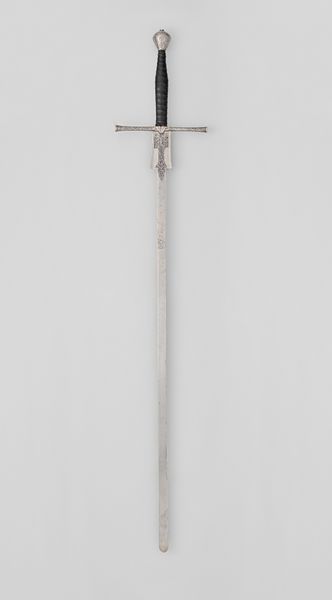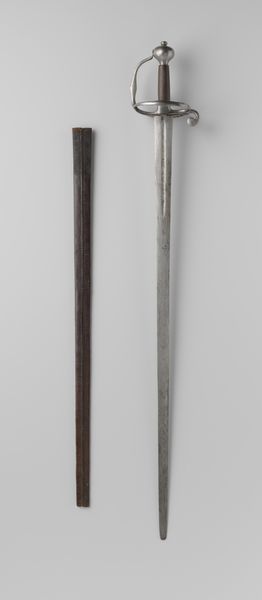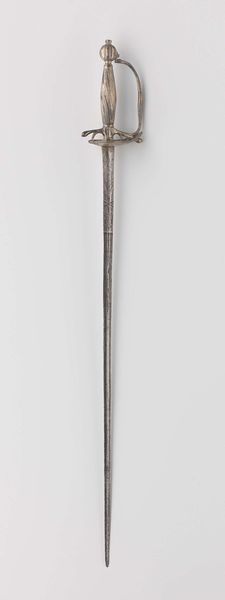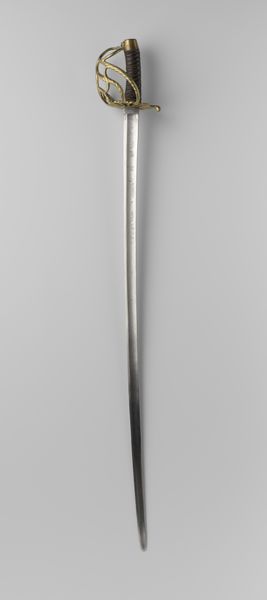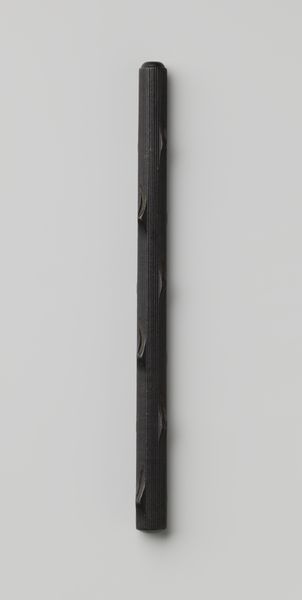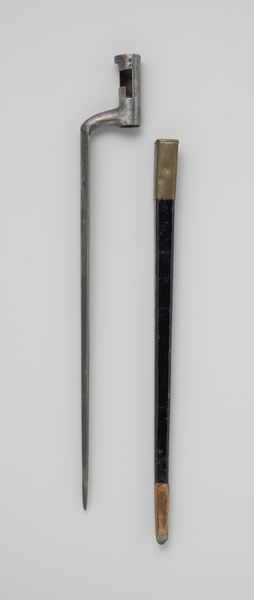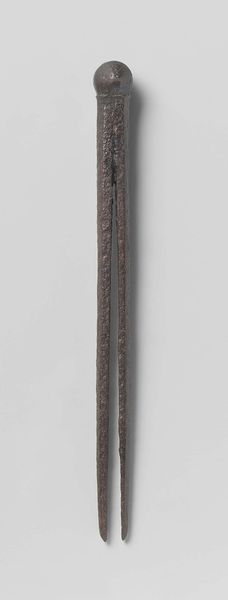
drawing, carving, metal, wood
#
drawing
#
carving
#
metal
#
geometric
#
wood
#
northern-renaissance
#
realism
Dimensions: length 62.8 cm, width 2 cm, length 36.7 cm, width 4.5 cm, diameter 2.7 cm
Copyright: Rijks Museum: Open Domain
Curator: Let’s examine "Tools," dating back to circa 1590-1596, an intriguing piece housed at the Rijksmuseum. Its creator remains anonymous. Editor: Immediately, I’m struck by the stark geometry, almost cruciform. The aged, almost humble materials exude an unexpected power despite its simplicity. It feels elemental. Curator: It is elemental, in a very real sense. Crafted from wood and metal, this object blurs the line between utility and representation. The craftsmanship itself—the way the wood is carved and joined with the metal—speaks to a very particular kind of labor of that era. Editor: Indeed. The tool becomes a symbol, a representation of the physical labor that underpins society. Is this T shape intentional, perhaps nodding to some ancient symbol of creation or building? Curator: That's certainly plausible. The shape is almost primal, suggesting the fundamental acts of making and building. But let’s also think about what is NOT here. We only see the tool. What were the precise steps involved in obtaining raw materials, working with them in workshops, transporting, and consuming? These steps speak of socio-economic stratification. Editor: A poignant perspective! This lends additional gravity to the image. It also touches on cycles – these instruments participate in transforming materials into something useful but gradually disintegrate over time themselves... the handle seems worn, the metal pitted with age. This erosion adds layers of meaning. Curator: Absolutely. Furthermore, the anonymity of the maker forces us to consider not the individual genius but the collective know-how, skills of generations who’ve engaged these methods of shaping the world. Editor: So this anonymous piece functions like a reliquary? It transforms base labor into almost spiritual experience connected through collective memory... I’m suddenly conscious of tools I possess, the countless hands which shaped their form. Curator: That's insightful. The image then, serves to foreground social labor through symbolism—drawing into light material existence undergirding our shared present. Editor: A modest piece offers quite extraordinary reflections about process, intention, and social relationships within art. Curator: Exactly; by examining seemingly simple tools in terms of social history interwoven within symbolic imagery, new frameworks towards art opens for us.
Comments
rijksmuseum about 2 years ago
⋮
Each ship was fitted with carpentry tools for making repairs. On Nova Zembla, these tools came in handy for building the ‘Safe House’. It is striking how little the tools have changed over the centuries; many of them can still be found in modern toolboxes.
Join the conversation
Join millions of artists and users on Artera today and experience the ultimate creative platform.
